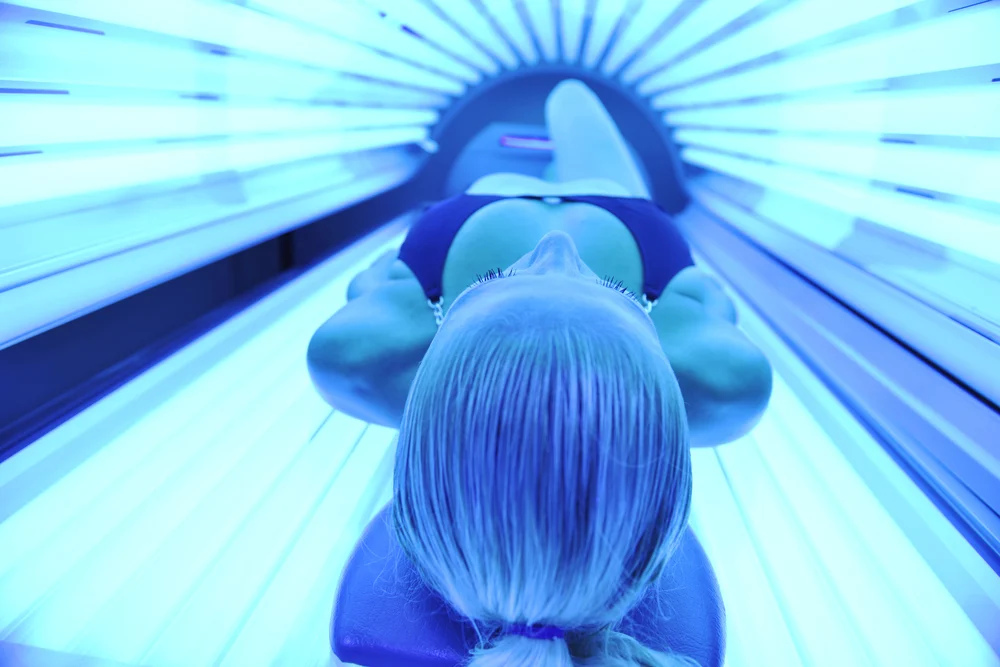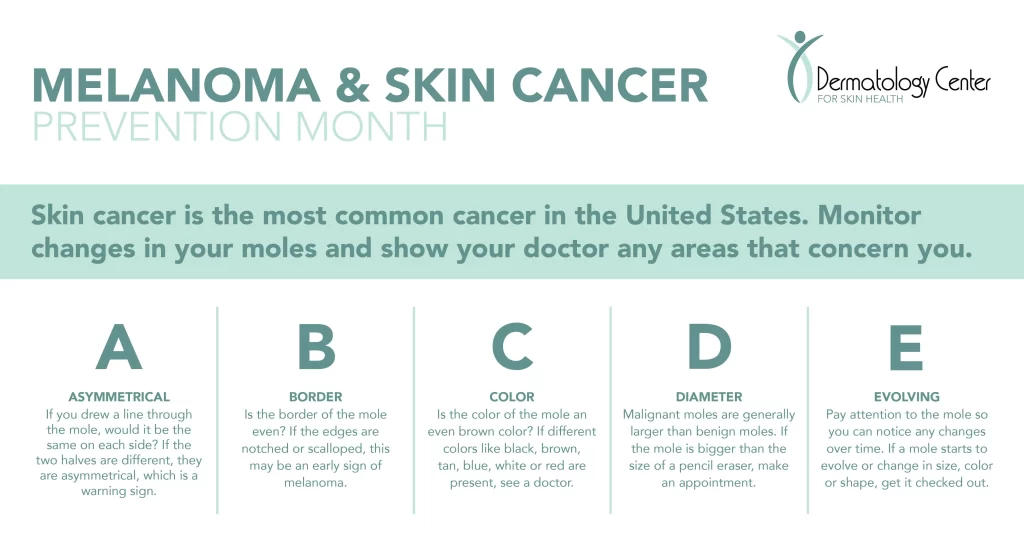Whether you get it on the beach, in a bed, or through incidental exposure, tanning is bad news, any way you acquire it. The damage caused by tanning, even if you’re only getting a little bit of sun here or there, adds up over time and can contribute to aging and skin cancer.
Learn why tanning is bad for your skin, as well as how to check for changes in your skin and skin cancer prevention.
WHY IS TANNING SO BAD FOR YOUR SKIN?
Ultraviolet radiation, whether from the sun or from a tanning bed, is a carcinogen (a substance that promotes cancer), just like cigarettes are a carcinogen. And just as there’s no safe amount of smoking, you can’t get a safe tan.
Types of ultraviolet radiation
UVA and UVB are two types of ultraviolet radiation. UVB affects the superficial layers of an individual’s skin while UVA penetrates the skin deeply. According to the Skin Cancer Foundation, UVA rays account for up to 95 percent of the UV radiation reaching the earth’s surface. Learn more about the differences between UVA and UVB, as well as the differences in sunscreen and sunblock here.
No matter what you may hear at tanning salons, the cumulative damage caused by UV radiation can lead to:
- Premature skin aging
- Wrinkles
- Lax skin
- Brown spots
- Skin cancer

There are numerous studies that have consistently shown that indoor tanning increases all forms of skin cancer.
Tanning beds are not safer than lying out in the sun. In fact, according to the American Academy Dermatology Association, people who have ever used a tanning bed have a:
- Sixty-seven percent increased risk of developing squamous cell carcinoma.
- Sixty-nine percent of people have an increased risk of developing basal cell carcinoma.
- People who first use a tanning bed before age 35 increase their risk of melanoma by 75 percent.
- Occasional use of tanning beds triples your chances of melanoma.
Melanoma is the most common form of cancer in young adults aged 25 to 29 years old and the second most common in people aged 15 to 29 year olds. Melanoma is the leading cause of death in women aged 25 to 30 years old and second leading cause of death in women aged 30 to 35 years old.
Melanoma can develop from existing moles or even may look like a mole. They are usually black or brown in color, but can sometimes be pink, red, blue or white.

To monitor the changes in your moles, you can use the ABCDE method, developed by the Academy of Dermatology.
- A: Asymmetrical
- B: Border
- C: Color
- D: Diameter
- E: Evolving
Other characteristics an individual should look for when detecting skin cancer include:
- Large brown spots with darker speckles located anywhere on the body
- Dark lesions on the palms of the hands and soles of the feet, fingertips toes, mouth, nose or genitalia
- Translucent pearly and dome-shaped growths
- Existing moles that begin to grow, itch or bleed
- Brown or black streaks under the nails
- A sore that repeatedly heals and reopens
- Clusters of slow-growing scaly lesions that are pink or red
DERMATOLOGY CENTER FOR SKIN HEALTH, PLLC | SKIN CANCER PREVENTION
Unfortunately, researchers have found that tanning is addictive like nicotine. Is really worth it to forming a bad habit that increases skin cancer and promotes aging?
Roughly 90 percent of non-melanoma cancers are attributable to UV radiation. To protect yourself, use these six tips:
- Stay out of the sun during peak hours (between 10 a.m. and 4 p.m.)
- Cover up the arms and legs with protective clothing
- Wear a wide-brimmed hat and sunglasses
- Use sunscreen year round with a SPF of 30 or greater and sunblock that works on both UVA and UVB rays. Look for products that use the term “broad spectrum.”
- Check your skin monthly and contacting your dermatologist if you notice any changes
- Get regular skin examinations. It is advised that adults over 40 get an annual exam with a dermatologist
THERE IS NO such thing as “safe tanning.” If you have been exposed to tanning beds or have a skin lesion, it’s important to make an appointment with your dermatologist for a full body skin check.
To talk with our dermatologist about changes on your skin, call 304-598-3888.
Topics: Tanning, Tanning bed


